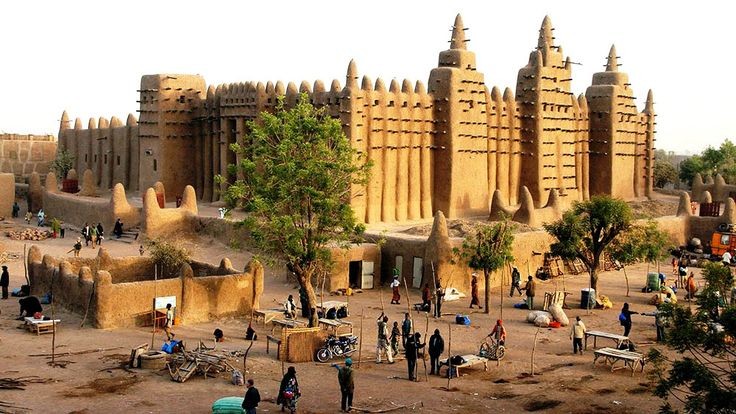The Ancient University of Sankore in Timbuktu, Mali, a beacon of African scholarship, dating back to the 1200s AD, offered advanced education in various fields and attracted scholars from across the Muslim world. Today, its legacy continues to inspire.
Timbuktu, the legendary city in Mali, stands as a testament to Africa’s profound contributions to global knowledge and culture. Home to one of the world’s oldest universities, the University of Sankore, Timbuktu has a rich history that dates back to the 1200s AD. This esteemed institution, along with the Djinguereber and Sidi Yahya mosques, formed the cornerstone of learning and scholarship in medieval West Africa.

A Glimpse into the University of Sankore
The University of Sankore was an epicenter of education, attracting scholars from diverse regions including Egypt, Fez, and beyond. The subjects taught at Sankore were wide-ranging and advanced for their time, encompassing geography, astronomy, medicine, mathematics, science, and history. Notably, the study of history at Sankore was unique, as it was not typically part of the Islamic educational curriculum elsewhere.
The Role of Mansa Musa
Mansa Musa, often hailed as the richest man in history, played a pivotal role in the development of Timbuktu’s educational landscape. During his reign (1307-1332), he embarked on a pilgrimage to Mecca, returning with architects and scholars who helped establish the city’s renowned educational institutions. Mansa Musa’s vision and investments made Timbuktu a hub of learning that attracted scholars from across the Muslim world.
Preservation of Knowledge
The arrival of Europeans, Moroccans, and Asians in Mali from the 1300s to the 1800s posed a threat to Timbuktu’s rich manuscript collections. In response, Malians safeguarded their valuable texts by hiding them in basements, attics, and underground locations to protect them from destruction or theft. Today, approximately 700,000 manuscripts have been rediscovered, shedding light on the advanced state of knowledge in medieval Mali.
Pedagogy and Curriculum
Education at the University of Timbuktu followed traditional Islamic teaching methods. Students would transcribe their teachers’ dictations, which they would later study and revise. This method, still prevalent in the Islamic world, ensured a rigorous and thorough understanding of subjects. Core texts included the Quran, Sahih al-Bukhari, Sahih Muslim, and Kitab al-Shifa, along with significant works from the Maliki school of thought.
The Decline and Legacy
Timbuktu’s scholarly prominence began to wane following the Moroccan invasion in 1591. Despite this decline, the city’s contributions to African and Islamic scholarship remained invaluable. According to African scholar Shamil Jeppie, “Timbuktu is a repository of history, a living archive which anybody with a concern for African history should be acquainted with.” The legacy of Timbuktu continues to inspire and inform contemporary understanding of Africa’s historical and intellectual heritage.
Conclusion
The story of Timbuktu and its University of Sankore is a powerful reminder of Africa’s rich intellectual history and its contributions to global knowledge. As we delve into these narratives, we uncover not just the past but also a source of inspiration for the future. Timbuktu’s legacy is a call to action for the preservation and celebration of Africa’s historical achievements.
By embracing and promoting these stories, we can foster a deeper appreciation for Africa’s role in the global intellectual community and inspire future generations to build upon this remarkable legacy.
For more insightful stories and historical narratives, stay tuned to BlaccTheddi Post, where we read Africa’s important stories, know and understand Africa’s truths, and take action to change Africa’s future.

Leave a Reply
You must be logged in to post a comment.